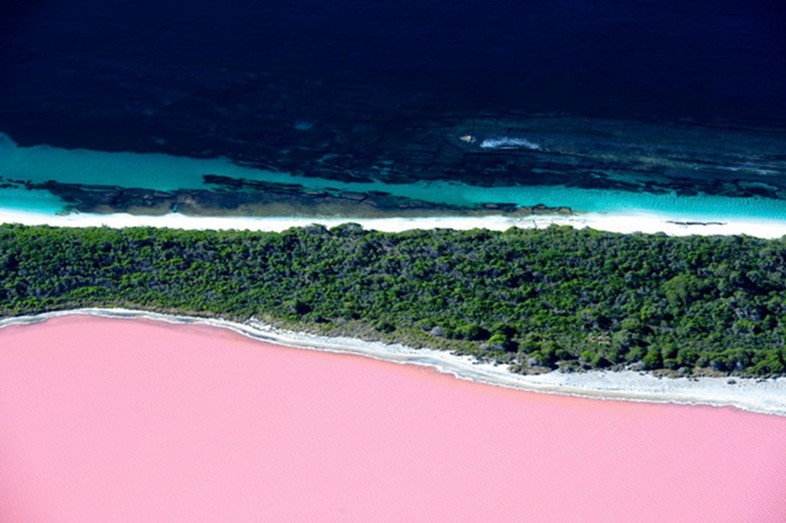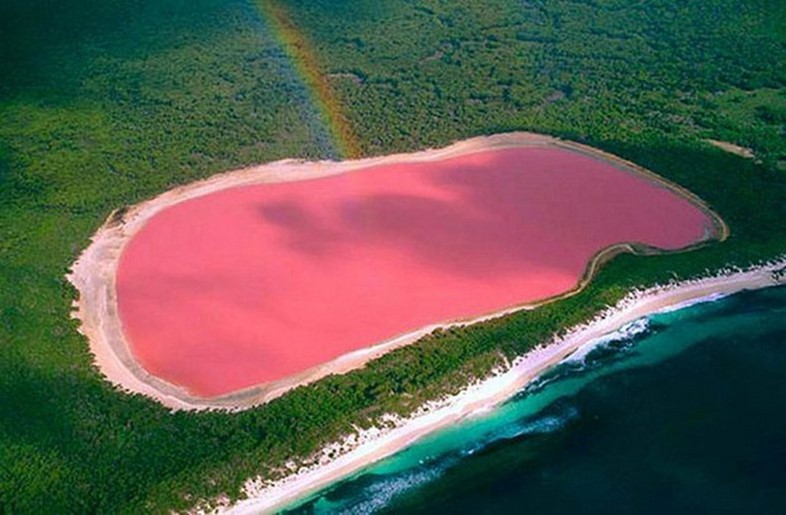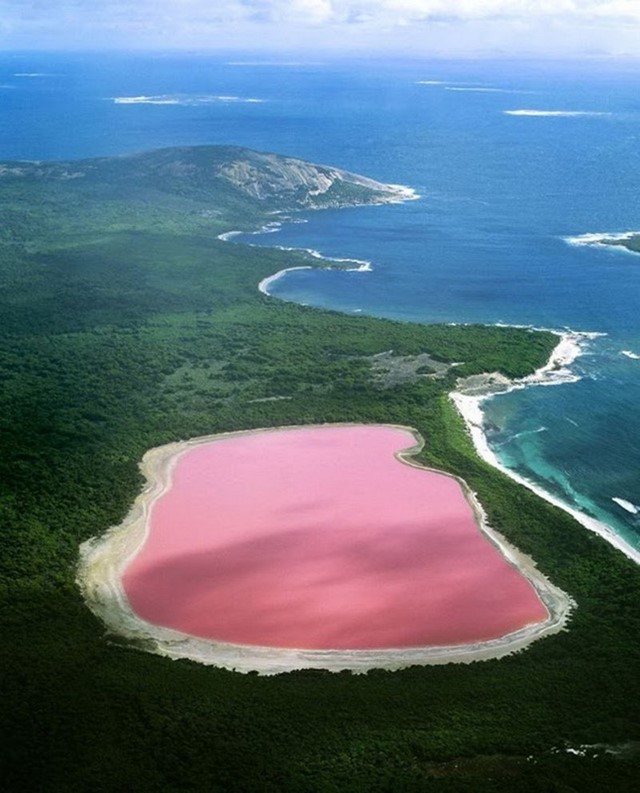super/collider draws our attention to one of the most surreal natural sights on Earth – the pink lakes of Western Australia
Where on Earth?
Western Australia
GPS Coordinates: 34°5′S 123°12′E
We’re flying above Australia’s rugged, wild coastline along the Southern Ocean. For mile after mile, empty sand dunes and thousands of tiny islands stretch out below us, until, like some pop art hallucination, a splotch of pink appears amid the greenery. At first it looks manmade: maybe a giant sheet of pink plastic or some kind of chemical pond caused by mining. But as we get closer and start to bank, the pink blob glimmers in the sunshine and you realise it’s a body of water. The aptly-named Pink Lake is among the most surreal sights on Earth – and it’s entirely natural.

Pink Lake is one of a number in this part of Western Australia, an eight hour drive from Perth on the south coast. Fly out towards Cape Arid National Park over the ocean and you soon come to the even-more-spectacular Lake Hillier (one of AnOther’s most popular Loves, we hasten to add). Located on an island just off the coast, it’s a perfect, stunning shade of bubblegum pink surrounded by gleaming white salty sand and green eucalyptus and paperbark trees – set beside a vast sea of blue stretching to the horizon. Separated from the ocean by a narrow strip of land, the lake is like an art installation created by nature: though similar lakes are found in Senegal, Spain and Azerbaijan, the contrast here between the bright pink and the other brilliant colours is unique.

What on Earth?
So what’s turning the lakes such a surreal shade of pink? Though scientists aren’t 100% sure, it’s likely caused at least in part by Dunaliella salina – a species of algae that thrives in the super salty water. To survive in such hypersaline environments, the algae is rich in glycol and creates reddish beta-Carotene – both of which make it useful in cosmetics and anti-ageing treatments. In Lake Hillier, a bacteria-like organism called Halobacteriaceae may also play a role, creating a pigment called bacteriorhodopsin to absorb light and create energy. Like the world’s other pink/red lakes, the colour can vary from season to season and year to year. Whatever the cause, the water at Lake Hillier is unique because once bottled in maintains its pink colour.

How on Earth?
To protect its fragile ecosystem, Middle Island is off-limits to visitors, but can you can swim in Pink Lake, close to the town of Esperance.
